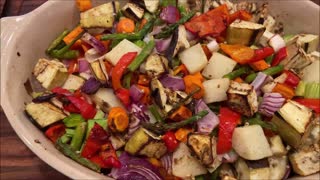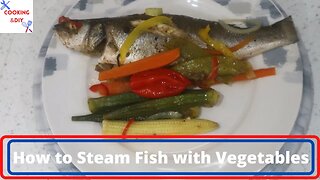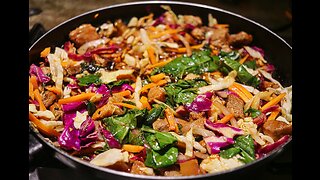Steamed vegetables
Steamed Vegetables is a simple and healthy cooking method that involves cooking vegetables using steam, which is the hot vapor produced when water is boiled. Steaming is known for preserving the color, flavor, and nutrients of the vegetables while maintaining a desirable texture. It's a popular cooking technique for those looking to create light and nutritious dishes. Here's how the process of steaming vegetables is described:
Preparation:
Choose Vegetables: Select a variety of vegetables for steaming. Common choices include broccoli, cauliflower, carrots, green beans, asparagus, Brussels sprouts, and zucchini, among others.
Washing and Trimming: Wash the vegetables thoroughly under cold water to remove any dirt or debris. Trim or cut the vegetables into bite-sized pieces to ensure even cooking.
Steaming:
Equipment: You'll need a pot or steamer basket with a lid. The steamer basket sits above simmering water, allowing the steam to cook the vegetables.
Water Level: Pour enough water into the pot to create steam but not so much that it touches the bottom of the steamer basket. The water should be brought to a gentle simmer.
Arrangement: Place the vegetables in a single layer in the steamer basket. This allows the steam to circulate around each piece evenly.
Cover and Steam: Place the steamer basket over the simmering water and cover the pot with a lid. The steam will cook the vegetables. Cooking times vary based on the type and size of the vegetables. Typically, it takes around 5-10 minutes for most vegetables to become tender.
Checking Doneness: Test the vegetables for doneness by inserting a fork or knife. They should be easily pierced but still retain some firmness. Overcooking can lead to mushy vegetables.
Finishing:
Seasoning: Once the vegetables are steamed, they can be seasoned to enhance their flavor. You can drizzle them with a little olive oil, sprinkle with salt and pepper, or add a pinch of herbs or spices.
Serving: Steamed vegetables can be served as a side dish, added to salads, used in stir-fries, or incorporated into various recipes.
Benefits of Steaming:
Nutrient Retention: Steaming helps retain more of the vitamins, minerals, and antioxidants present in vegetables compared to other cooking methods that involve higher heat and water.
Texture: Steaming preserves the natural texture of vegetables, keeping them tender-crisp rather than overly soft or mushy.
Low Fat: This cooking method requires minimal or no added fats, making it a healthier option.
Quick and Easy: Steaming is a relatively quick cooking method that requires minimal hands-on time.
Steaming vegetables is a versatile and health-conscious way to enjoy their natural flavors and benefits, making it a go-to technique for many home cooks and chefs alike.
steamed vegetables recipe
food fusion
healthy foods
sanjeev kapoor khazana
-
 7:28
7:28
Cooking
3 years ago $0.01 earnedRoasted Vegetables
631 -
 0:19
0:19
Travel Journal
1 year agoGourmet Delight: Steak with Roasted Veggies❗
4 -
 7:34
7:34
parbird2002
2 years agoHow To Steam Fish With Vegetables
2 -
 8:25
8:25
Cooking
3 years agoRice with Vegetables
371 -
 6:52
6:52
cubanoscooking
1 year agoGreen Veggies Noodle Soup
461 -
 3:07
3:07
Cooking
3 years agoEasy Roasted Veggies
662 -
 5:02
5:02
Cooking
3 years agoEggs and Vegetables
55 -
 18:47
18:47
Mbkitchenette
9 months ago6 Satisfying Vegetable Recipe for you to share : #food #share #cooking #facts #foryou
46 -
 1:29
1:29
Easy Recipes
1 year agoStir-Fried Chicken and Vegetables
11 -
 8:50
8:50
joannepimentel
6 months ago $0.56 earnedMY SON’S FAVORITE SIDES!!! | CRISPY SMASHED POTATOES & ROASTED BROCCOLI
7285